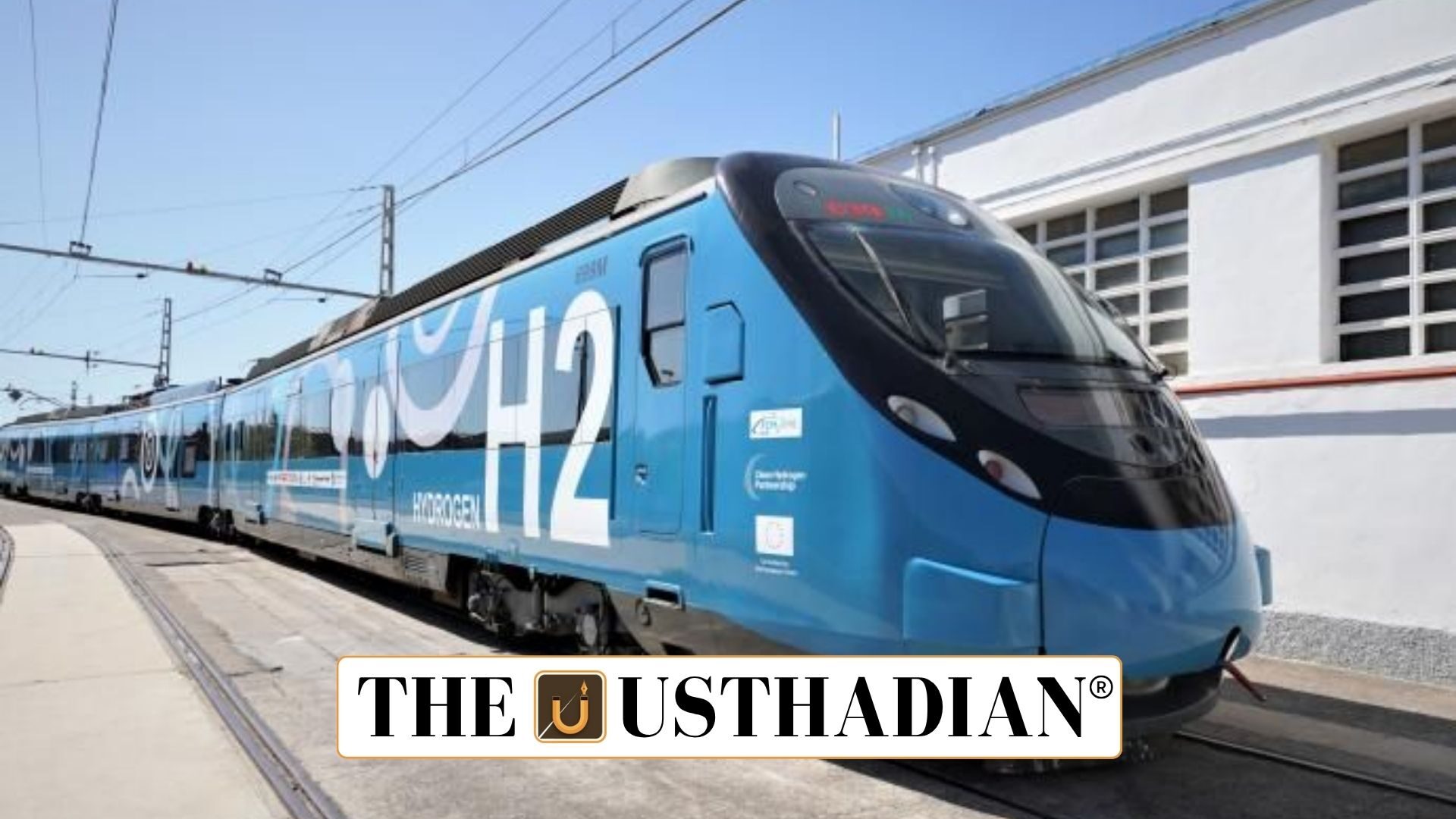Hydrogen for Heritage initiative gains momentum
Hydrogen-Powered Trains Fueling India’s Green Rail Future: Indian Railways has launched the Hydrogen for Heritage initiative to revolutionize rail transport by deploying 35 hydrogen-powered trains on hill and heritage routes. This move aligns with India’s broader clean energy transition goals.
In 2023, the first hydrogen-powered coach was successfully tested at the Integral Coach Factory in Chennai, showcasing India’s indigenous capability in advanced locomotive design.
World’s most powerful hydrogen rail engine
The new hydrogen trains are designed with a 1,200 HP engine, currently the most powerful hydrogen propulsion system in global rail transport. This technological advancement strengthens India’s standing in green transportation.
Hydrogen fuel cell technology allows these trains to operate with zero direct CO₂ emissions, emitting only water vapor. It marks a critical step in India’s National Green Hydrogen Mission.
Environmental and operational benefits
Green hydrogen has a significantly higher energy density than batteries, allowing longer operational hours with less refueling. It can also be stored and transported efficiently, making it ideal for rail operations across India’s diverse terrain.
Replacing one diesel locomotive with a hydrogen-powered version can cut emissions equal to the annual carbon output of nearly 400 cars. This transition also reduces noise and vibration, improving rail travel experiences.
Static GK fact: India is one of the first Asian countries to test hydrogen fuel technology in rail transport.
Infrastructure and production challenges
Despite its promise, the adoption of hydrogen fuel faces hurdles. Currently, most hydrogen in India is generated via steam methane reforming, resulting in grey hydrogen—a process that emits CO₂.
India lacks large-scale proton exchange membrane (PEM) electrolyser facilities, which are essential to produce green hydrogen using renewable energy sources.
There’s also a shortage of refueling and storage infrastructure on Indian Railways’ routes. This hinders smooth integration of hydrogen technology into existing systems.
Static GK Tip: Proton exchange membrane electrolysis is a key method for producing green hydrogen using solar and wind energy.
Way forward for Indian Railways
To scale this innovation, Indian Railways is advised to:
- Expand hydrogen pilot projects beyond heritage routes to mainstream rail corridors
- Build dedicated hydrogen storage, transport, and refueling infrastructure
- Focus on low-frequency, remote routes for initial rollouts to reduce costs
- Collaborate with PSUs and ministries to scale up green hydrogen production capacity
The Indian Railways’ hydrogen initiative, if executed effectively, can set a global benchmark for sustainable public transport, particularly in large, energy-intensive economies.
Static Usthadian Current Affairs Table
Hydrogen-Powered Trains Fueling India’s Green Rail Future:
| Topic | Detail |
| Hydrogen for Heritage | Initiative by Indian Railways to run 35 hydrogen trains on heritage routes |
| First Hydrogen Coach Test | Conducted at Integral Coach Factory, Chennai in 2023 |
| Engine Capacity | 1,200 horsepower – world’s most powerful hydrogen rail engine |
| Emissions Benefit | One hydrogen train offsets CO₂ of 400 cars annually |
| Fuel Type | Hydrogen fuel cell with water vapor as the only emission |
| Current Hydrogen Type in India | Mostly Grey Hydrogen from steam methane reforming |
| Electrolyser Gap | Lack of high-capacity PEM-based green hydrogen electrolysers |
| Strategic Focus | Expand pilots, build supply chains, and focus on remote routes |
| National Mission Link | Part of National Green Hydrogen Mission |
| Storage Challenge | Insufficient infrastructure for hydrogen storage and refueling |








